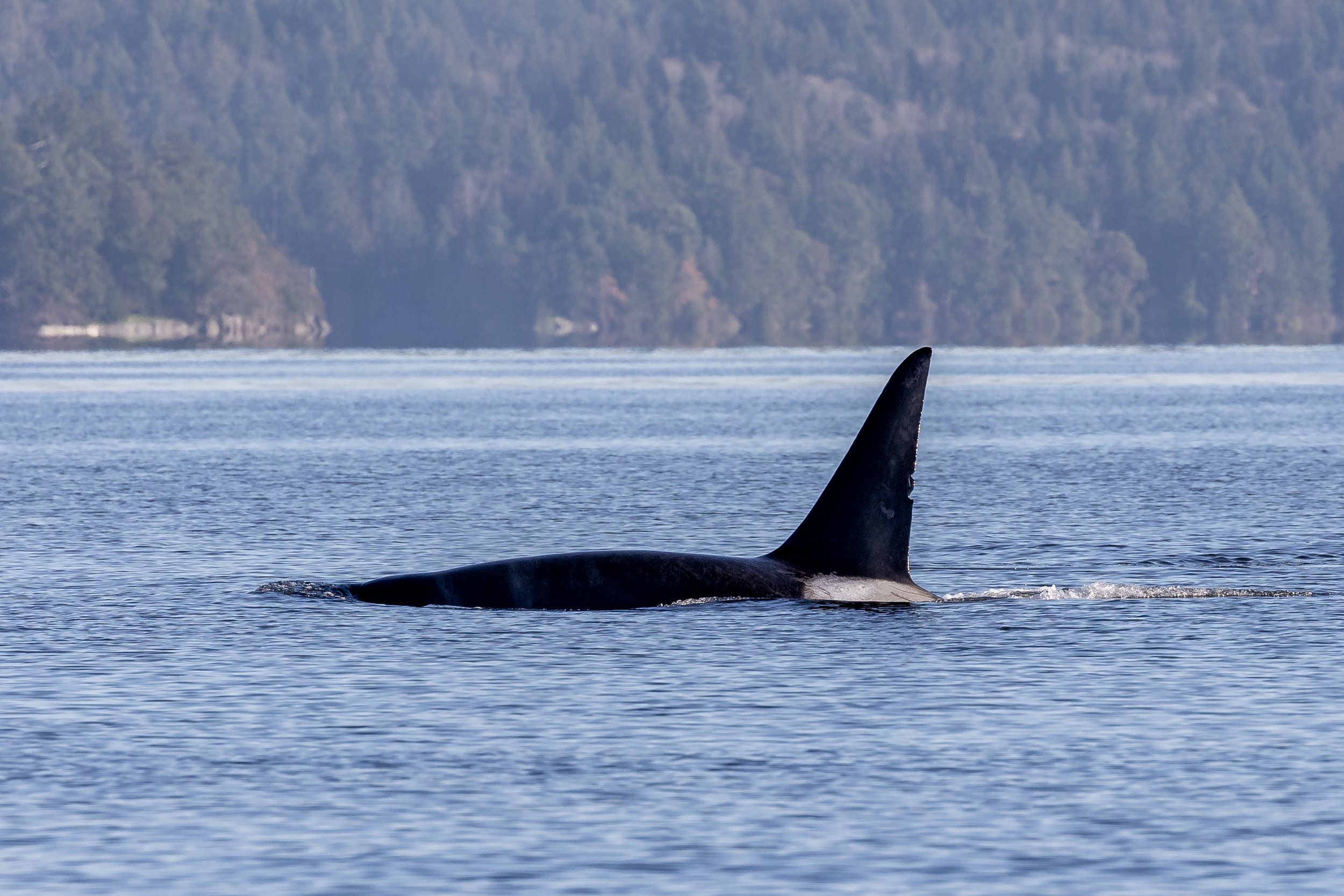November 17, 2023 - A funky pod of orca we have never seen before, the T068Cs!
It was a crisp, cool day when we pushed off the dock on Kula. We headed on out with our hopes high as we started searching for whales. We had got word of a sighting of orca inside the southern gulf islands, so we turned and started cruising in that direction. We ended up finding these whales by Chemainus today, travelling together and doing deep dives. We were able to ID these whales as T049C Nielson and a new-to-us pod, the T068Cs:
T049C Nielson (1998)
T068C Bazan (1992)
T068C1 Sila (2007)
T068C3 Jacobsen (2012)
T068C4 Rich (2014)
T068C5 (2020)
T068C6 (2023)
Unfortunately, these whales were being a bit tricky today, and after a bit, they vanished without a trace! You would think that would be hard to do as orca are quite large, but considering they can stay underwater for roughly half an hour if they want to, it can happen!
While T068C Bazan is a very successful mother, you may notice that her second calf T068C2 Casper was not on the list of whales present during this trip.
If you are a long-time blog reader, you may remember a particular transient orca named T046B1B Tl’uk. Tl’uk was very interesting as he was completely white instead of white and black. Our first sighting of Tl’uk was back in May 2019. Sadly, it is believed that he passed away from Chédiak–Higashi Syndrome.
What do these two whales have in common? Why are we bringing up two whales that were not here? Well, it is believed that T068C2 Casper may have had the same syndrome as Tl’uk. This rare immunodeficiency disorder presents in orca as a white coloration over their whole body. As the young whale ages, their rostrum (head) begins to darken and their body takes on a gradient look. If these whales were Leucistic or Albino (two other ways whales could have white-on-white coloration instead of black and white) they should not have this darkening occur on their bodies.
Individuals who have Chédiak–Higashi Syndrome are known to have shortened lifespans - Tl’uk and Casper were both believed to be deceased around the age of 3 years old. There have been at least 4 known white whales in the Transient orca population including T004 Chimo, T006 Alice, T046B1B Tl'uk, and T068C2 Casper. While we do not know if all these whales are related, it is very interesting to track which matrilines produce calves with this syndrome.
After departing our disappearing orca, we headed out into the Strait of Georgia to see if we could make today a double species day. We were able to locate two humpbacks travelling together North of Galiano Island. These two were ID’d as Sherwina (BCY0961) and Scratchy (BCY1022). We are nearing the end of our Humpback season now so it was very exciting to get to see these two still in our area! These whales both head to Hawaii for the breeding season. We wouldn’t be surprised if they buddy up and decide to make the journey south together!
After another wonderful whale-filled day, we made a quick stop at Harmac to see our grumbly sea lions snoozing and bickering away along the Harmac log booms. As the sun began to set, we turned back to home port and cruised back home after another very successful day out on the water.
Please enjoy these stellar photos taken by Marine Naturalist Vanessa Vereschahen.
T049C Nielson with T068C3 Jacobsen and T068C5 behind him.
T049C Nielson with his very unique dorsal fin.
T068C4 Rich with their distinct saddlepatch - those two little white marks behind their dorsal fin can be used to confirm their ID!
T068C Bazan beside her child T068C4 Rich.
T049C Nielson’s giant wiggly dorsal fin as he travels.
T049C Nielson travelling along.
T049C Nielson up close and personal.
BCY0961 Sherwina in front of Mt. Baker.
Our humpback duo BCY0961 Sherwina and BCY1022 Scratchy travelling side-by-side.
BCY0961 Sherwina’s distinct dorsal fin!
BCY0961 Sherwina fluking.
An up-close look at a humpback’s blowholes.
BCY1022 Scratchy’s lumpy bumpy side and dorsal.
BCY1022 Scratchy diving.
BCY1022 Scratchy with a beautiful fluke waterfall.
BCY1022 Scratchy going for a dive.
BCY0961 Sherwina’s gorgeous fluke.
The top of BCY0961 Sherwina’s fluke.
BCY0961 Sherwina fluking - what a beautiful arch!
BCY1022 Scratchy’s dorsal fin.
BCY1022 Scratchy - look at that cool fluke!
Mt. Baker was nice and visible today!
A misty day in the Pacific Northwest.
A majestic Bald Eagle.
Look at that gorgeous fall foliage!
A Steller sea lion beside a California sea lion.
Fighting for the best place on the log booms.
Making a splash!
A giant pile of sea lions on the log booms at Harmac.






























